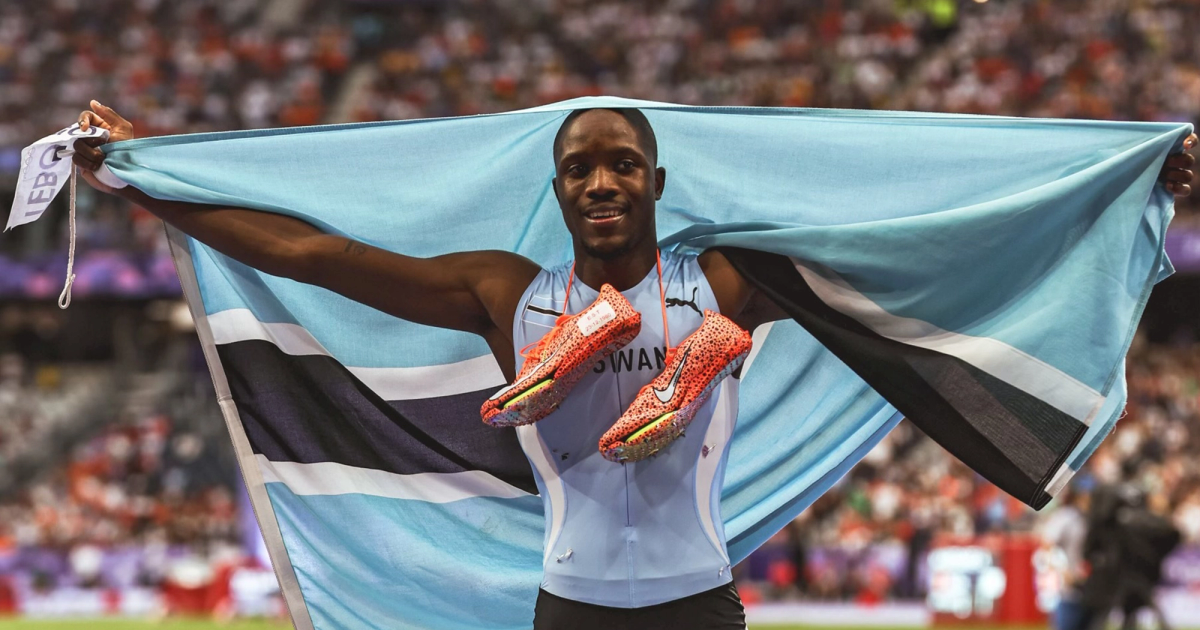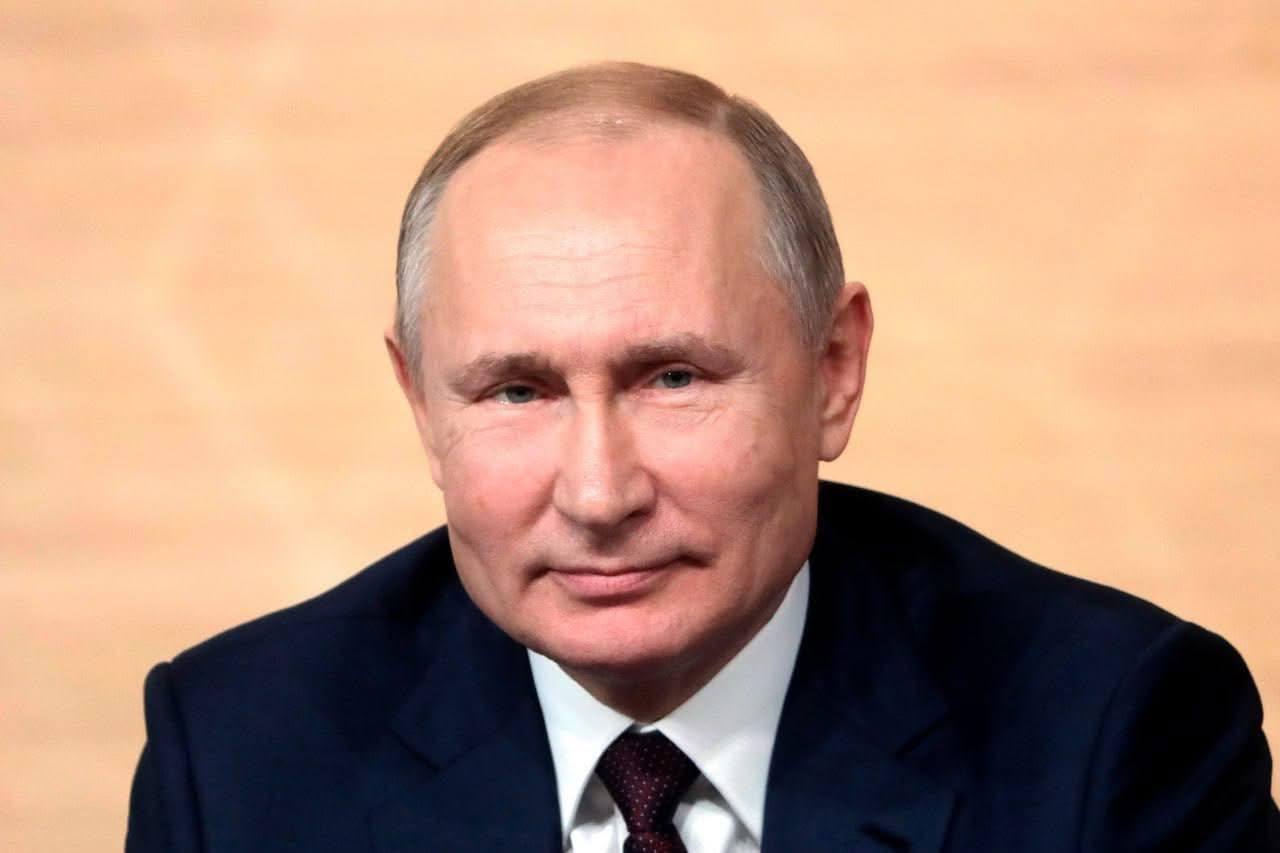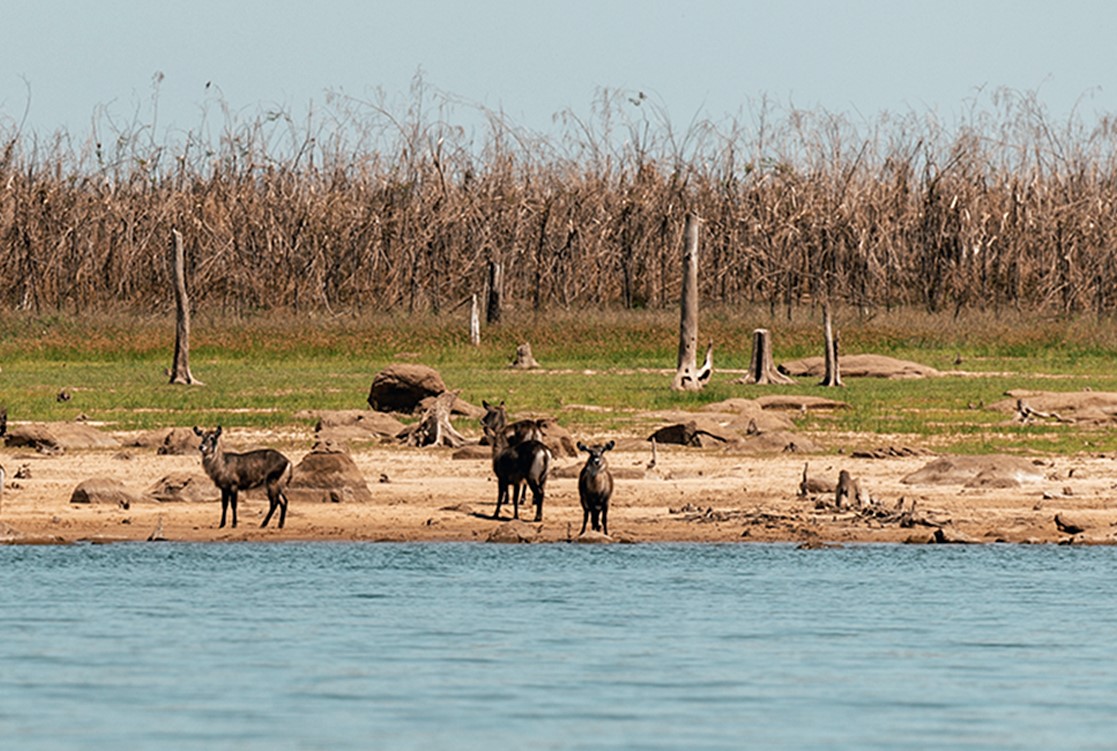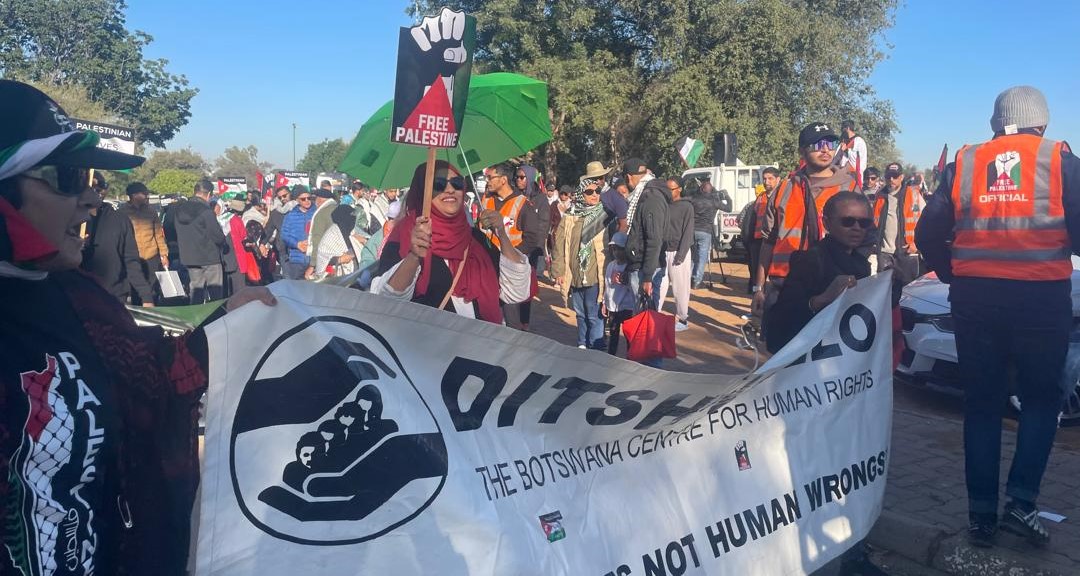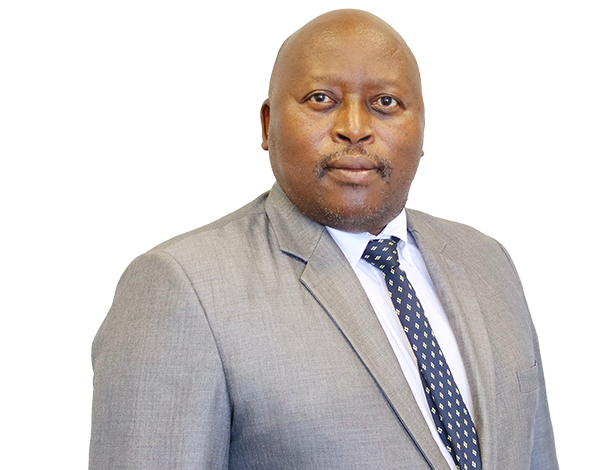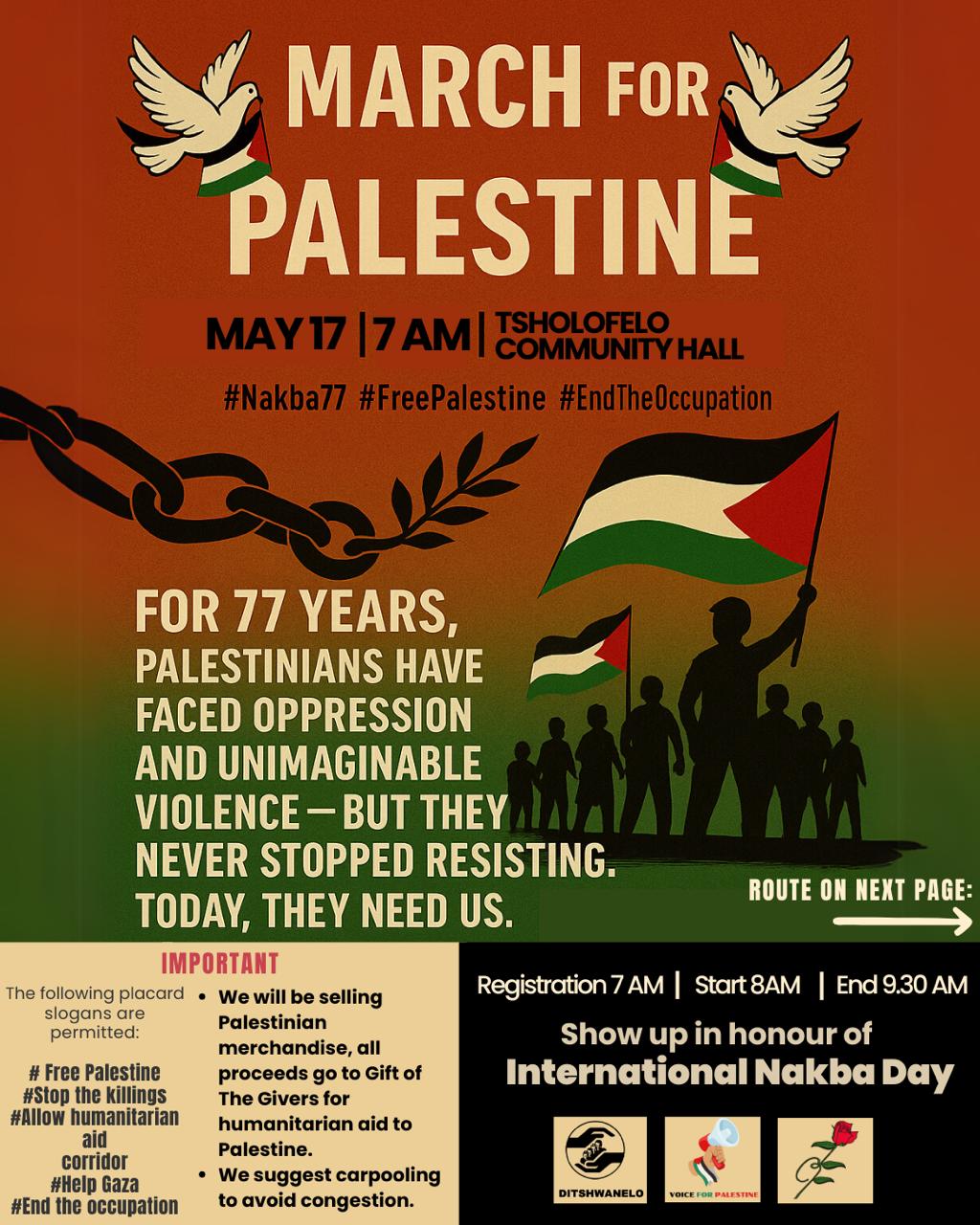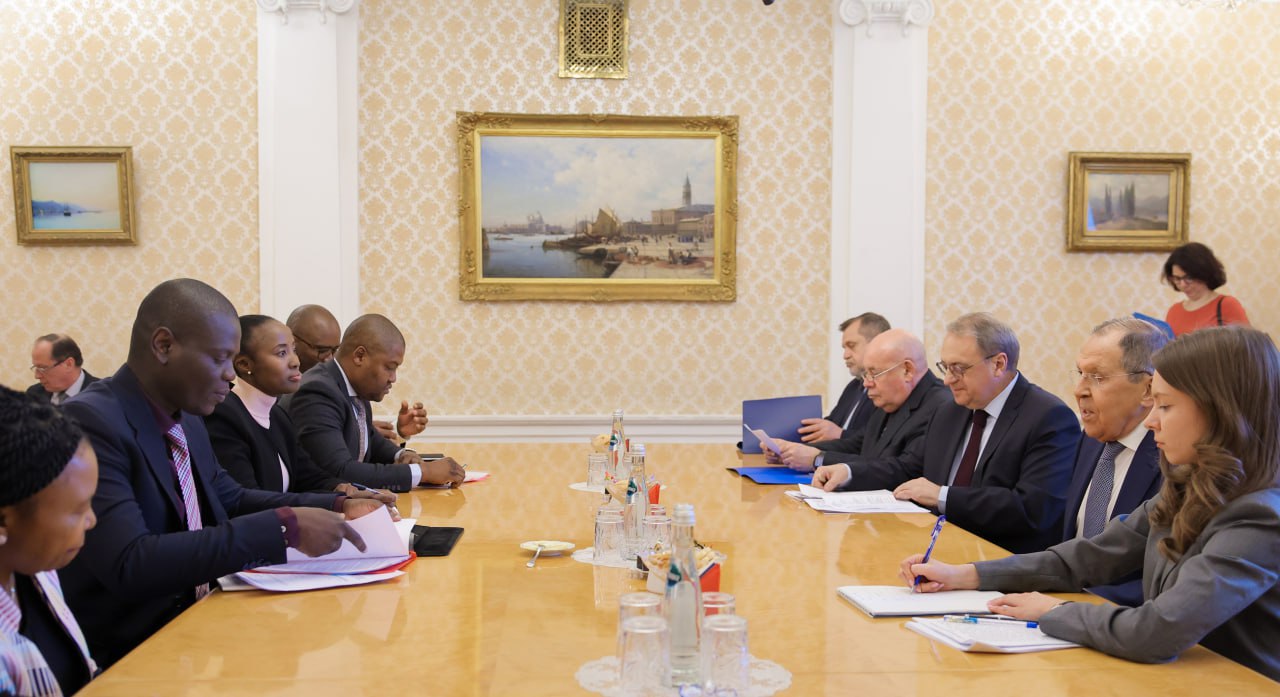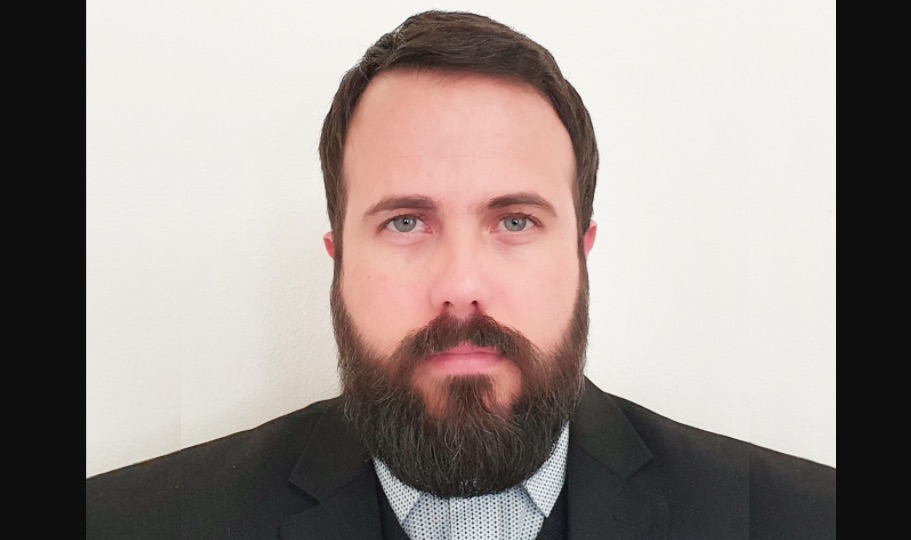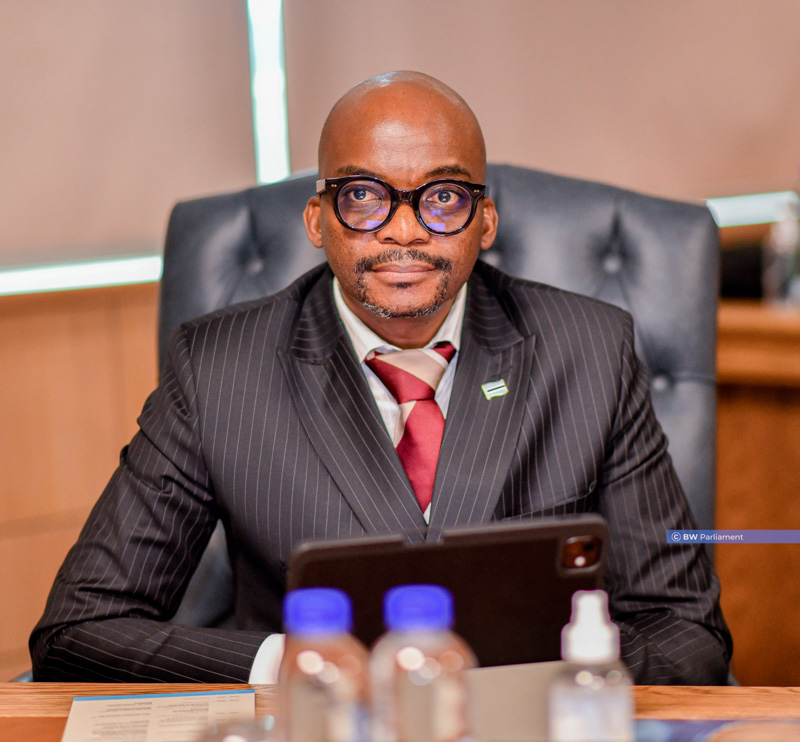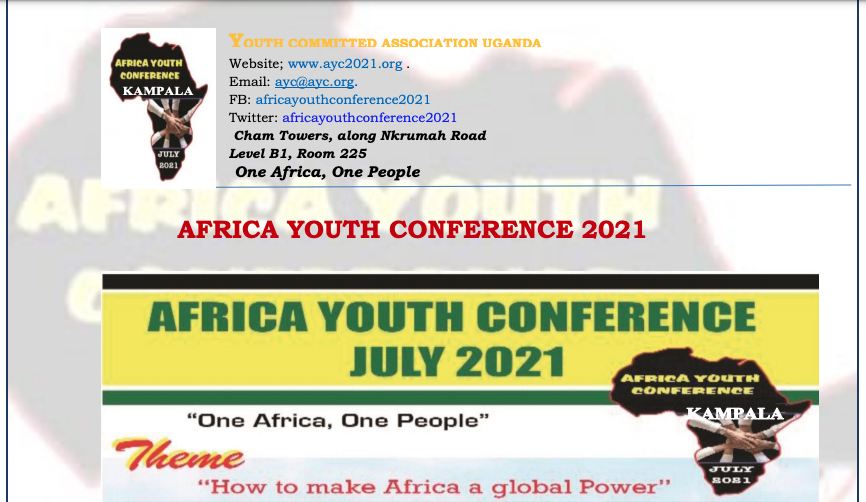
Africa has her own concrete conditions of life and concrete reality of her history which is distinct and extremely complex history and culture. Thus the liberation struggle can only be comprehended as a concrete attempt to provide solutions to the problems peculiar to their specific history, culture and colonial conditions
YOUTH COMMITTED ASSOCIATION UGANDA Website; www.ayc2021.org .
Email: ayc@ayc.org.

FB: africayouthconference2021
Twitter: africayouthconference2021
Cham Towers, along Nkrumah Road Level B1, Room 225
One Africa, One People
AFRICA YOUTH CONFERENCE 2021
Conference Theme: “How to make Africa a global power”
Date: 22rd -23rd July, 2021
Time: 8:00 am to 6:00 pm
Expected Attendance: 700 people
Fore note;
Africa has her own concrete conditions of life and concrete reality of her history which is distinct and extremely complex history and culture. Thus the liberation struggle can only be comprehended as a concrete attempt to provide solutions to the problems peculiar to their specific history, culture and colonial conditions
However fine and attractive the realities of others may be, we can only truly transform our own reality on the basis of a detailed knowledge of it and our own efforts and sacrifices.
Background;
Africa is the world’s second largest (30.37million km2) and second most populous (1.216Bn people) continent. She is famous for her Savannah jungles, Sahara Desert, rich culture and vast natural mineral resources spread over the continent.
Even when blessed with vast mineral resources for industrial usage and trade, large arable land (874 m Ha) for agriculture, an explosive young population (17% of the World population) for human labour, a good climate that favours almost all productive human deliberations and a hospitable culture, Mother Africa still remains the least developed and poorest continent in the world (3% of the World GDP). Through history, Africa has lagged behind other continents on economy and political advancements thus has failed to become part of the World Powerhouses for centuries. So many factors have caused this yet three stand out;
Slave trade, colonialism and Imperialism
These three are the root causes of Africa’s Political, economic and Social/cultural problems that have disrupted the continent for more than 600 years.
All the three have one common goal i.e. exploitation. The Europeans took part in slave trade in order to gain goods for trade cheap labour for industry. They took part in colonialism so as to gain access to the forces of production in Africa i.e. land and labour and the big market in Africa.
They are now taking part in Imperialism alongside the Americans in order to hold firm control of the forces of production in Africa. Thus they did exploit Africa but still continue to date. With slave trade Africa became depopulated, but most importantly, in order to get slaves easily, they caused inter-tribal and inter-state wars amongst Africans thus salve trade caused a very deep structural problem of ethnic rivalry, depopulation and drain human labour.
Colonialism was more exploitative and caused more structural problem because it involved the European settlers and political control of Africa. These colonialists destroyed African culture and norms in order to break the fighting spirit of the people. Thus deep ethnic rivalry, mineral resources exploitation, ideological disorientation using the bible and Christianity which to date is the main reason for most Non-Pan Africanist acts of many Africans.
Imperialism is another version of Colonialism which is continuing the deep structural problems created by the colonialists. But due to partial loss of political control over Africa, they are now using cultural Imperialism as the fighting weapon. This is breaking the African fighting spirit more. In order to make Africa a global power again, all this must change.
Thus we hereby understand the estimation of the exploitation Africa has undergone through;
a) THE SLAVE TRADE;
∙ Muslim slave traders “exported” ± 8 million African slaves to southern Europe and to Asia Minor between 700 – 1400. Little is known about their contribution to the economy of the Mediterranean world.
∙ Portugal and Spain got official permission from Pope Nicholas VI through the Papal Bull – DUM DIVERSAS to practice slavery in 1452 on condition that it should try to convert the slaves to Christianity.
∙ Slave voyages;
Some of the Estimated Statistics
I. CARRIERS
| COUNTRY | VOYAGES | SLAVES TRANSPORTED |
| Portugal (including Brazil) | 30,000 | 7,954,012 |
| Spain (including Cuba) | 4,000 | 6,856,458 |
| France (including West Indies) | 4,200 | 3,785,169 |
| Holland | 2,000 | 998,123 |
| Britain | 12,000 | 6,785,012 |
| British North America, U.S. | 1,500 | 1,262,741 |
| Denmark | 250 | 238,409 |
| Other | 250 | 64420 |
| TOTAL | 54,200 | 27,944,344 |
II. SLAVES DELIVERED TO
| Brazil | 4,235,452 |
| Spanish empire (including Cuba) | 2,578,021 |
| British West Indies | 2,785,452 |
| French West Indies (including Cayenne) | 1,681,235 |
| British North America & U.S. | 245,204 |
| Dutch West Indies (including Surinam) | 785,245 |
| Danish West Indies | 28,125 |
| Europe (including Portugal, Canary Islands, Madeira, Azores, etc.) | 245,987 |
| TOTAL | 12,584,721 |
III. ORIGINS
| Senegambia (in Arguin), Sierra Leone | 2,941,132 |
| Eastern Africa | 2,159,013 |
| Windward Coast | 1,117,749 |
| Ivory Coast | 258,049 |
| Gold Coast (Ashanti) | 5,472,165 |
| Slave Coast (Dahomey, Adra, Oyo) | 7,481,538 |
| Benin to Calabar | 2,314,110 |
| Cameroons/Gabon | 327,534 |
| Loango | 761,361 |
| Congo/Angola | 3,813,569 |
| Mozambique/Madagascar | 1,298,124 |
| TOTAL LEAVING AFRICAN PORTS | 27,944,344 |
IV. LABOR
| (First employment in the Americas) | |
| Sugar plantations | 6,635,410 |
| Coffee plantations | 2,453,123 |
| Mines | 1,892,101 |
| Domestic labor | 1,563,478 |
| Cotton fields | 785,693 |
| Cocoa fields | 632,785 |
| Building | 365,452 |
| TOTAL | 14,328,042 |
sources; (Forced Migration [London, 1982], 13-60; also, Inikori, D. C. Ohadikhe, and A. C. Unomah, The Chaining of a Continent [UNESCO, Paris, 1986]).; The slavery, Zanzibar library)
–Selected Prices of Slaves 1440-1870
These are the mere indications. In general, prices rose slowly throughout the period of the trade but, at the end of the eighteenth century, the price of slaves in Africa was rather too close to that in the Americas for the comfort of the slave traders. In the nineteenth century, prices rose in the Americas (Cuba, Brazil) and fell in Africa, so some great fortunes were made.
1440s: in Senegambia, one horse for 25 or 30 slaves
1500:12 to 15 manillas on the coast of Guinea
1500-1510: average price in Seville, 20 ducats
1593: average price 20,000-30,000 reals.
1620: 270-315 pesos for a Guinea slave, 200 for an Angolan
1654: Dutch charging 2,000 pounds of sugar per slave
1698: in Madagascar, slaves can be bought for 10 shillings in English goods;
1700-1750: slave prices in Virginia £28-£35
1750s: £12.80 at mouth of the Gambia
1800: in Cuba, slaves at $90, according to Humboldt 1801-10: price per slave in Senegambia is £29.28
1848: slaves in Brazil selling at 400 m or £45-£50
1850: slaves at $360 in the U.S.
1850s: Saint-Louis, Sénégal, prices at £28
1864: slaves in Cuba at $1,250-$1,500
(sources; the slave trade; The story of the Atlantic slave trade,1440-1870, Appendix Four)
From 1397 until 1888 European slave-traders transshipped more than 27 million Africans as slaves to the Americas. Twelve to twenty generations lived as slaves in the Americas. The total slaves deployed over the 370 years in the Americas may have been considerably more than 100 million at a time when the world population was less than 1 billion. The slave trade was cruel and violent. It caused a multitude of “slave wars” between African tribes that lasted for centuries. The deployment of the African slaves in the Americas was immoral, inhuman and one of the worst crimes against humanity.
b) COLONIALSM
This phenomenon is the paralysis, stagnation, regression, deviation and halting of the dominated people’s agency i.e. their capacity to become and make themselves known to each other and other human groups on their own terms and their own unique way. Thus European capitalist inspired colonization of Africa is the violent superimposition of European history and culture on, over and against African history and culture. Consequently this underdeveloped and impoverished the surviving African populations.
The European colonial powers namely Spain, Portugal, England, Holland, France, Belgium, Germany, and Italy used their superior weapons and military forces to enslave and colonize directly the African pre-capitalist societies between the 19th and 20th centuries in order to exploit their economic resources and labor power through looting, piracy, terrorism, genocide, expropriation, annexation, continued subjugation, and exploitation. As capitalism emerged and developed in Western Europe, the need for raw materials, such as gold and silver, food, markets, and free or cheap labor expanded due to the desire to minimize the cost of production and to increase the rate of profit to accumulate capital/wealth. These needs were fulfilled through racial colonialism, racial slavery, racial terrorism and racial genocide.
The African inland was almost impenetrable due to germs, resilient tribes, diseases like yellow fever, sleeping sickness, yaws and leprosy. Greatly of all was malaria which claimed many of their lives. The industrial revolution (1760) in Europe had created big vacuum and need for raw materials and human labor for the factories. This pushed the European nations to find technological means of accessing Africa’s Natural resources and forceful get cheap labor from Africa. The technological invention of Quinine for malaria and the Maxim gun (1885) paved the way to the land. Also the rivalries between European nations and desire for prestige for owning colonies caused the scramble and partition of Africa. This was a protracted properly coordinated stratagem laid by the West. Explorers led the way who on record most of them were army officers e.g. David Livingstone, Francis Burton, James Bruce and Henry Morton Stanley. Then Christian missionaries followed as they twisted people’s minds towards adoring the White skin. Later the in the 19th Century, Colonialists followed.
The intensification and consolidation of global capitalism in the world With the development of globalization, further division of labor, the advancement of technology and organizational capacity in the form of state, military organization, the interstate system, and the transnational corporation, and with the limitless capacity to accumulate more capital in a globalized world, certain human groups have demonstrated their capabilities to impose their power
on other human groups through political violence that has involved war, terrorism, and genocide to satisfy their individual and group interests at the cost of humanity .The colonizing nations of the West had justified “their scramble for foreign territories as fulfillment of a sacred duty to spread their form of civilization to the world. These countries used the discourses of the superiority of their race, culture, civilization, and Christian religion to promote and justify destructive and exploitative policies, such as terrorism, genocide, and economic exploitation. The more the colonizers and their descendants advanced in technology and organizational capacity, the more they engaged in terrorism and genocide to continue the robbery of the resources of indigenous peoples around the world.
Classical example of colonial genocide and theft; King Leopold of Belgium Looting in DRC
In 1880, Congo was estimated to have a population of 30 million. By 1911 the population was reduced to 8,500,000. Leopold claimed the territory of modern-day Democratic Republic of the Congo—as his personal property. It was called État Indépendant du Congo, the Congo Free State. It was the world’s only private colony, and Leopold referred to himself as its “proprietor.’’ For two decades the Belgians looted unimaginable amounts of wealth killing more than 10 million people.”
Hence European colonialism forced Africans out of their history into the European Racist, capitalist and colonial history. Thus colonialism arrested development of class formations and class struggles but also halted their productive forces and violently forced them to produce what Europe wanted them to produce, using modes of production that Europe brutally demanded them to use. This evil has caused endless suffering and these remain part and parcel of the life-worlds and lived-experiences of the wretched of the earth, e.g. (1) physical and/or psychological violence, racio-biological domination and discrimination; (2) economic exploitation; (3) poverty; (4) illiteracy; (5) lawlessness, stealing and crime; (6) starvation; (7) death; (8) disaster; (9) disease; (10) disenfranchisement; (11) the denial of “cultural equality;” and, (12) the denial of participation in political process
c) IMPERIALISM
Indirect domination: by means of a political, economic, cultural power made up mainly or completely of native [African] agents. Unfortunately for the European states and the United States of America, through the 20th Century more and advance technological inventions were made which caused a big need for more gross raw materials e.g. lithium, oil, jewelry etc. and human capital.
After World War 11 the need for Africa’s resources caused these countries to opt for new means of exploitation i.e. Neo-colonialism and later classical Imperialism thus the Imperialistic policies in Africa through racial capitalism, globalization and cultural imperialism in order to control the political, social and economic structures of Africa.
Wealth lost by Africa per Year due to Imperialism in Africa (source; jubiledebt.og.uk)
c.1) Racial capitalism;
This is one of the most destructive forces in human history. Capitalism economically exploits and underdevelops all poor races However, when and where capitalism connects with colonialism, Which is almost everywhere considering the historical fact that the rise of capitalism coincides with European imperial expansion around the globe, it exploits the dominated people in extreme ways because the workers not only lose their labor, but their sense of self and their kinship with their history and culture.
At the center of the capitalistic culture is Individualism for which every man for himself, every society for itself, every nation for itself. No one cares for the neighbor and humanity at large. The capitalist political economy bases on accumulation of resources and controlling the forces of production for personal benefit. Thus the West through time has forced the African people fully open their economies for maximum exploitation via the Multi-National Corporations. Through crazy policies such as regularization of the economy, commercialization of all life aspects, privatization of all societal institutions etc. These extremely powerful MNCs and TNCs gain Africa’s resources at cheap price but sell the products back to Africa and the entire world at an extremely high price.
MNCs in Africa and their yearly returns
| Resource | Total exports per year from Africa | Price at Africa market (local) (Unit weight – 1kg) | Price of product ( International market) (Unit weight 1kg) | Western MNCs and TNCs | Returns per year of corporation (billion) |
| coffee | 11,395,460Kgs | $1 | $10,000 | Starbucks coffee company (USA) | $26.1 |
| Lavazza (Italy) | $2.2 | ||||
| Costa coffee (UK) | $1.7 |
Number of countries branches corporation
32
17
| The Coffee Bean & Leaf | $645 | ||||
| oil | 1,040,000,000 barrels | $28.95 | Royal Dutch Shell (Netherlands & UK) | $140.9 | |
| BP plc (UK) | $22.54 | ||||
| Exxon Mobil (USA) | $264.9 | ||||
| Total | $200.316 | ||||
| cocoa | 2,120,000,000 Kgs | $2.23 | $22.7 | Mars Wrigley Confectionery (USA) | $35 |
| Ferrero Group (Luxembourg / Italy) | |||||
| Mondelēz International (USA) | |||||
| Hershey Co (USA) | |||||
| gold | 720,000 Kgs | $59.6 | Anglo Gold Ashanti | $9.5 | |
| Kinross Gold Corporation | $9.1 | ||||
| New crest Mining Limited | $10.2 | ||||
| Agnico Eagle Mines Limited | $7.8 |
(source; wikipedea)
The classical example of Imperialism; French Imperialism in West Africa
i. The former colonies have to pay a “colonial debt’ inform of a tax.
ii. France’s former colonies are forced to use the colonial currency French Communaute Africaine -FCFA (the CFA franc and must deposit their national monetary reserves into France’s central bank. They are: Benin, Burkina Faso, Ivory Coast, Mali, Niger, Senegal, Togo, Cameroon, Central African Republic, Guinea Bissau, Equatorial Guinea, Chad, Congo
Brazzaville and Gabon. It is estimated that France now holds nearly $500 billion of African countries’ money in its treasury and allows them to access only 15 percent of the money in any given year.
iii. France claims the right to exploit any natural resource discovered in the country.
iv. France forces African countries to give preference to French interests and companies in the field of public procurement and public biding.
v. France claims an exclusive right to supply military equipment and training to African military officers. The situation in Africa now is that France has trained and nourished hundreds, even thousands of traitors.
vi. France claims a right to deploy troops and intervene in the African country to defend France’s interests.
vii. The African countries are obliged to make French the official language of the country and of education.
c.1) Globalization;
Is the growth of the sizes of social systems and increase in the complexity of inter-societal links. Through history it has occurred through political, economic and cultural endeavors by a certain society to dominate other societies. This has led to mini-systems, world-economies and world-empires. Since the 14th Century, the West has tried to create a World Empire under its control hence slave trade, colonialism and now Imperialism. Unfortunately many scholars write saying that globalization is a natural process. This is false as from Afroeurasian Modern system is a making of Europe and now advanced by the USA.
It has caused interconnecting of the various global cultures, economies and polities. Unfortunately due to the higher
technological and scientific advancements of the West, the interconnections with Africa have been coercive and never on equal grounds. Thus currently Africa is suffering from
With globalization increase, the more The West increases its control of Africa. The International organizations e.g. UN,EU, ICC,WHO, WTO, UNCTAD etc. were all founded and designed to exploit globalization in favor of the West.
The growth of globalization level in the historical process
Globalization pathology is not just colonization of life-world by system, but includes exploitation, tyranny, domination, and Marginalization as well. Thus the ultimate goal is to create a World Empire of which Africa will be just a territory for exploitation
c.3) Cultural Imperialism;
Culture is a collection of distinctive spiritual, material, intellectual and emotional attributes of the society or a social group and it involves art and literature, lifestyles, way of life, value system, beliefs and traditions. Through history, the African people have lived naturally with a proper developing historical cultural process until slave trade, colonialism and now Imperialism.
Africa’s history begins with the emergence of hominids, archaic humans and at least 200,000 years ago-anatomically modern humans (Homo sapiens sapiens), in East Africa and continues unbroken into the present as a patchwork of diverse and politically developing nation states. The earliest recorded history arose in the Kingdom of Kush, later in ancient Egypt, the Sahel, the Maghreb and the Horn OF Africa. Around 30BCE, Egypt fell to Rome as a provincial state and this marks the beginning of neocolonialism on African soil. North Africa history became entwined with the Middle East and Southern Europe while the Bantu expansion swept from modern day Cameroon across much of the Sub-Saharan Continent in waves between around 1000 BC and 0AD, creating a linguistic community across much of the Central and Southern Continent. These movements and now settlements made Africa a home of 4 main ethnicities i.e. Afro asiatic, Khoisan, Bantu, Sahel.
Some notable precolonial states and societies in Africa include e the Ajuran Empire, D’mt, Adal Sultanate, Alodia, Waisangali Sultanate, Kingdom of Nil, Nok Culture, Mali Empire, Benin Empire, Oyo Empire, Kingdom of Lunda (Punu-yaka), Ashanti Empire, Ghana Empire, Mossi Kingdoms, Mutapa Empire, Kingdom of Mapungubwe, Kingdom of Sine, Kingdom of SENNAR, kingdom of Saloum, Kingdom of Baol, Kingdom of Cayor, Kingdom of Zimbabwe, Kingdom of Congo, Bunyoro Kitara Empire, Empire of Kaabu, Kingdom of Ille Ife, Ancient Carthage, Numidia, Mauritania and Aksumite Empire.
Africa in the past cared for one another, cherishing the values laid down by their ancestors, the spirit of togetherness was prevailing. This was the culture. Then came the Christian missionaries. They were driven by the explicit aim of reconstructing the African world in the name of God and European civilization. They waged a long battle for the possession of salient signs and symbols, a bitter and drawn out contest of conscience and consciousness that led to a clash of cultures and civilizations.
Cultural imperialism is the pressure put on one society to adopt the culture, values, and lifestyle of another. It is equivalent to structural imperialism or cultural dependency and synchronization or ideological imperialism. This creates a dependency paradigm bent on spreading capitalist values. With the tool being cultural commodities which are highly standardized goods, produced in a capitalist context and have a substantial influence on audiences.
Cultural commodities refers to products of the print and audio visual industries including movies, television, publishing, radio, and music. These products are vehicles for the transmission of values, lifestyles, and ideologies that many see as corrosive to the recipient culture. Media plays a central role in creating and transmitting the dominant culture to the developing society. Transnational media and communication industries are the “ideologically supportive informational infrastructure” of global capitalism and agents for “the promotion, protection and extension of the modern world system” which “create …attachment to the way things are in the system, overall. These industries and products are seen as causing severe negative effects on such as cultural alienation, homogenization, synchronization, dominance and the creation of false needs and consciousness.
Western culture has “a more ambitious and universal thrust to it, a concept of the child as a common denominator between varying civilizations that appeals to more deep-rooted dissatisfactions in today’s society. The fact that kids cannot be considered conscious consumers that can make their own decision. In addition, majority of these Western “industrial products of fiction” are directed first and foremost to the world’s upper and middle class global
consumers, supporting the argument that the cultural trade is more of an ideological driven enterprise.
In order to fully achieve their agenda, the powerful Western communication industry forced global commercialization, regularization and privatization of the international communication system. This gave way to Multi-National Media Corporations taking up the African market since they are highly funded and equipped with high media technology. They include; Netflix, Sony, Reuters etc
Cultural imperialism is not maintaining its rule merely through the export of cultural products, but through institutionalization of European [Western] ways of life, organizational structures, values and interpersonal relations, language.
Africa is suffering from devastating effects of Slavery, racial colonialism and now Imperialism which are keeping Africa underdeveloped and prevent Her from being a global power. These effects are political (mostly security issues), economic and social (cultural distortions).
1) Political effects;
Slave trade caused and amplified inter-tribal and interstate conflicts. Colonialism relied on divide and rule policy and ethnic cleavages were the major tool due to the many ethnic groups in Africa. During nation formations, the Europeans divided Africans depending on geographical formalities with no respect for the similarities and differences amongst the African people. On gaining independence one of the immediate and worst problems was the issue of sovereignty amongst different African societies and allocation of resources amongst the people thus internal conflicts both inter-state and inter-tribal.
∙ Internal conflicts;
These have been raging for centuries but they intensified after the Independence struggles. Millions of Africans were displaced from
∙ 1970–present Western Sahara conflict
An ongoing conflict between the people of Western Sahara led by POLISARIO Front and the Kingdom of Morocco fuelled by France. The conflict originated from an insurgency by the POLISARIO Front against Spanish colonial forces from 1973 to 1975 and the subsequent Western Sahara War against Morocco between 1975 and 1991.
To date, large parts of Western Sahara are controlled by the Moroccan Government and known as the Southern Provinces, whereas some of the Western Sahara territory remains controlled by the Sahrawi Arab Democratic Republic (SADR). Large numbers of Sahrawi refugees have been displaced by the conflict about 21000 people killed and 80000 as refugees.
∙ 1975–present Cabinda War
An ongoing separatist insurgency, waged by the Front for the Liberation of the Enclave of Cabinda (FLEC) against the government of Angola. FLEC aims at the restoration of the self proclaimed Republic of Cabinda, located within the borders of the Cabinda province of Angola. About 30000 people killed and 25000 displaced.
∙ 1987–present Lord’s Resistance Army insurgency An ongoing guerrilla campaign waged by the Lord’s Resistance Army (LRA) insurgent group since 1987. Currently there is low level LRA activity in eastern DRC and CAR. The movement is led by Joseph Kony, who proclaims himself the “spokesperson” of God and a spirit medium. By 2004, the LRA had abducted more than 20,000 children, while 1.5 million civilians had been displaced and an estimated 100,000 civilians killed.
∙ 1991–present Somali Civil War
An ongoing civil war taking place in Somalia which out of resistance to the regime of Said Barre during the 1980s. By 1988–
1990, the Somali Armed Forces began engaging various armed rebel groups, including the Somali Salvation Democratic Front in the northeast, the Somali National Movement in the northwest,] and the United Somali Congress in the south. The clan-based armed opposition groups overthrew the Barre government in 1991.
Various armed factions began competing for influence in the power vacuum and turmoil that followed, particularly in the south. In 1990–92, customary law temporarily collapsed due to the fighting. In the absence of a central government, Somalia became a “failed state”. In 1991 and 1998, two autonomous regional governments were also established in the northern part of the country.
In 2000, the Transitional National Government was established, followed by the Transitional Federal Government (TFG) in 2004. In 2006, Ethiopian troops seized most of the south from the newly formed Islamic Courts Union (ICU). The ICU then splintered into more radical groups, notably Al-Shabaab, which have since been fighting the Somali government and the AU
mandated AMISOM peacekeeping force for control of the country. About 500,000 killed and 1.1 million people displaced.
∙ 1994–present Insurgency in Ogaden
An armed conflict that took place from 1994 to 2018. It was fought by separatists, the Ogaden National Liberation Front (ONLF), against the Ethiopian government. The war began in 1994, when the ONLF attempted to recreate Greater Somalia by unifying Ethiopia’s Somali Region with Somalia. It ended in a peace agreement as part of Prime Minister Abiy Ahmed’s reforms. About 1300 people killed.
∙ 1995–present Second Afar insurgency
This is an insurgency in the Afar Region of Ethiopia and the Southern Red Sea Region of Eritrea (also known as Dankalia), waged by various Afar rebel groups. Both Ethiopia and Eritrea supported different rebel groups in the region in a proxy war, and occasionally engaged in border skirmishes with each other, as well as with opposing rebel groups.
∙ 1996–present Allied Democratic Forces insurgency
This is an ongoing conflict waged by the Allied Democratic Forces and the governments of Uganda and the Democratic Republic of the Congo. The insurgency began in 1995, intensifying in 2013, resulting in hundreds of deaths. About 3424 people were killed and about 150,000 displaced.
∙ Ituri conflict – 2003 to present
The agriculturalist Lendu and pastoralist Hema ethnic groups in the Ituri region of the north-eastern Democratic Republic of the Congo (DRC) continue to conflict. While the two groups had fought since as early as 1972. Armed conflict continues to the present day.
More long-term factors include land disputes, natural resources, and the existing ethnic tensions throughout the region. The ongoing conflict, has led to more than 50,000 deaths, more than 500,000 displaced civilians and continuing, unacceptably high, mortality.
o 1997–present Islamic Terrorism in Egypt
Many attacks have been linked to Islamic extremism, and terrorism increased in the 1990s when the Islamist movement al-Gama’a al-Islamiyah targeted high-level political leaders and killed hundreds – including civilians – in its pursuit of implementing traditional Sharia law in Egypt.[1]
o 2002–present Islamic insurgency in the Maghreb
An Insurgency in the Maghreb and Sahel regions of North Africa that followed on from the Algerian Civil War. The Algerian militant group Salafist Group for Preaching and Combat (GSPC)allied itself with al-Qaeda to eventually become al-Qaeda in the Islamic Maghreb (AQIM). While the 2011 Arab Spring affected support for the insurgency, it also presented military opportunities for the jihadists. In Libya, the Islamic State of Iraq and the Levant (ISIL) has been able to control some limited territory in the ongoing civil war since 2014, amid allegations of local collaboration between the rival AQIM and ISIL
∙ 2002–present Operation Enduring Freedom – Horn of Africa A component of Operation Enduring Freedom (OEF). The naval component is the multinational Combined Task Force 150 (CTF 150) which operates under the direction of the United States Fifth Fleet. Both of these organizations have been historically part of United States Central Command. In February 2007, United States President George W. Bush announced the establishment of the United States Africa Command which took over all of the area of operations of CJTF-HOA in October 2008.
The official area of responsibility comprises Sudan, Somalia, Djibouti, Ethiopia, Eritrea, Seychelles and Kenya. Outside this Combined Joint Operating Area, the CJTF-HOA has operations in Mauritius, Comoros, Liberia, Rwanda, Uganda and Tanzania. Of course this is all a cover operation for US presence in Africa
o 2006–2009 Ethiopian War in Somalia
The Somalia War, also known as the Ethiopian invasion and occupation of Somalia was an armed conflict involving Ethiopian (ENDF) and Transitional Federal Government forces and Somali troops from Puntland against the Islamic Court Union, and militias affiliated to them for control of the Somalia. About 21320 people killed and 1.9 million people displaced.
∙ 2007–present Operation Enduring Freedom – Trans Sahara
Operation Enduring Freedom Trans Sahara is primarily a training mission meant to equip 10 nations to combat insurgents in the region. Africa Command states
o 2009–present Islamist civil war in Somalia
The 2009–present phase of the Somali Civil War is concentrated in southern and central Somalia and portions of north eastern Kenya. It began in early February 2009 with the conflict between the forces of the Federal Government of Somalia, assisted by African Union peacekeeping troops, and various militant groups and factions. About 4365 people killed and about 1.4 million displaced.
o 2009 Nigerian sectarian violence
The 2009 Boko Haram uprising was a conflict between Boko Haram, a militant Islamist group, and Nigerian security forces. Violence across several states in northeastern Nigeria resulted in more than 1,000 dead, with around 700 killed in the city of Maiduguri alone. The immediate cause of the violence stemmed from a confrontation between a group of sect members and joint tax forces located at custom bridge Gamboru ward in the city of Maiduguri
o 2015–present ISIL insurgency in Tunisia
Ongoing militant and terror activity of the Islamic State of Iraq and the Levant branch in Tunisia which began in June 2015, with the Sousse attacks, though an earlier terror incident in Bardo Museum in March 2015 was claimed by ISIL, while the Tunisian government blamed Okba Ibn Nafaa Brigade for the attack.
o 2017–present Islamist insurgency in Mozambique An ongoing conflict in Cabo Delgado Province, Mozambique, mainly fought between Islamist militants attempting to establish an Islamic state in the region, and Mozambican security forces. About 1100 people killed and over 300,000 people killed.
∙ 2002-2003 Conflict in the Pool Department
A military conflict between the government of the Republic of the Congo and the rebel Ninja militia which lasted from 2002 to 2003. It began in March 2002, when clashes between Ninja militias and the government drove thousands of civilians from their homes. In June, a battle in Brazzaville resulted in 100 people being killed. On 12 March 2003, it was reported that the conflict had left 200,000 people “vulnerable and displaced”.
∙ 2003–present War in Darfur
The War in Darfur, also nicknamed the Land Cruiser War, is a major armed conflict in the Darfur region of Sudan that began in February 2003 when the Sudan Liberation Movement (SLM) and the Justice and Equality Movement (JEM) rebel groups began fighting the government of Sudan, which they accused of oppressing Darfur’s non-Arab population. One side of the conflict is mainly composed of the Sudanese military, police and the Janjaweed. About 300000 people killed and 3.o million people killed.
∙ 2004–present Conflict in the Niger Delta
Struggle for oil wealth has fueled violence between ethnic groups particularly the Ogoni and the Ijaw, causing the militarization of nearly the entire region by ethnic militia groups, Nigerian military and police forces. The violence has contributed to Nigeria’s ongoing energy supply crisis by discouraging foreign investment in new power generation plants in the region.
o 2016–present Niger Delta conflict
An ongoing conflict around the Niger Delta region of Nigeria in a bid for the secession of the region, which was a part of the breakaway state of Biafra. It follows on-and-off conflict in the Christian-dominated southern Niger Delta in the preceding years, as well as an insurgency in the Muslim-dominated northeast.
∙ 2004–present Kivu conflict
It began in 2004 in the eastern Congo as an armed conflict between the military of the Democratic Republic of the Congo (FARDC) and the Hutu Power group Democratic Forces for the Liberation of Rwanda (FDLR) in the DRC. It has broadly consisted of three phases, the third of which is an ongoing conflict. Prior to March 2009, the main combatant group against the FARDC was the National Congress for the Defense of the People (CNDP). Following the cessation of hostilities between these two forces, rebel Tutsi forces, formerly under the command of Laurent Nkunda, became the dominant opposition to the government forces.
CNDP is sympathetic to the Banyamulenge in Eastern Congo, an ethnic Tutsi group, and to the Tutsi-dominated government of neighboring Rwanda. It was opposed by the Democratic Forces for the Liberation of Rwanda (FDLR), by the DRC army, and by United Nations forces. About 11873 people killed and 1.4 million displaced.
∙ 2005–2008 Mount Elgon insurgency
A conflict that started in 2005 when the Sabaot Land Defence Force militia revolted in the Mount Elgon area, Western Kenya. In the 1920s and the 1930s, British Kenya displaced many native Sabaots in the modern-day Trans-Nzoia County. Most of their arable lands were given to new settlers, who became farmers in the area. The Kenyan Government gave later in the 1960s a 7,700-hectare (19,000-acre) amount of land to landless families after its independence in 1963 from the UK. About 600 people were killed and 45000 displaced.
∙ 2006-2013 Bakassi conflict
Insurgency in the Bakassi Peninsula of Cameroon waged by local separatists against Cameroonian government forces. After the independence of both Cameroon and Nigeria the border between them was not settled and there were other disputes. The Nigerian government claimed the border was that prior to the British–German agreements in 1913. On the other hand, Cameroon claimed the border laid down by the British–German agreements.
In 1994 Cameroon went to the International Court of Justice (ICJ) after many armed clashes occurred in the disputed regions. Eight years later the ICJ ruled in Cameroon’s favor and confirmed the 1913 border made by the British and Germans as the international border between the two countries. Nigeria confirmed it would transfer Bakassi to Cameroon.
In June 2006 Nigeria signed the Greentree Agreement, which marked the formal transfer of authority in the region, and the Nigerian Army partly withdrew from Bakassi. The move was opposed by many Bakassians who considered themselves Nigerians and they started to arm themselves on 2 July 2006. More than 50 people were killed between the start of the conflict and the full withdrawal of the Nigerians. The conflict largely ended on 25 September 2009 with an amnesty deal. Only the group, the Bakassi Freedom Fighters (BFF) and militants from the Niger Delta continue to fight.
∙ 2007–2009 Second Tuareg Rebellion
An insurgency that began in February 2007 amongst elements of the Tuareg people living in the Sahara desert regions of northern Mali and Niger. It is one of a series of insurgencies by formerly nomadic Tuareg populations, which had last appeared in the mid-1990s, and date back at least to 1916. Populations dispersed to Algeria and Libya, as well as to the south of Niger and Mali in the 1990s returned only in the late 1990s. Former fighters were to be integrated into national militaries, but the process has been slow and caused increased resentment. A Libyan backed peace deal, aided by a factional split among the rebels, and brought a negotiated ceasefire and amnesty in May 2009.
∙ 2008 Invasion of Anjouan
The invasion of Anjouan (code-named Operation Democracy in Comoros),on 25 March 2008, was an amphibious assault led by the Comoros, backed by African Union (AU) forces, including troops from Sudan, Tanzania, Senegal, along with logistical support from Libya and France. The objective of the invasion was to topple Colonel Mohamed Bacar’s leadership in Anjouan, an island in the Union of Comoros, when he refused to step down after a disputed 2007 election, in defiance of the federal government and the AU. The Comoros archipelago in the Indian Ocean has had a fractious history since independence from France in 1975, experiencing more than 20 coups or attempted coups.
∙ 2008 Djiboutian–Eritrean border conflict
The forces of Djibouti and Eritrea crashed between June 10 and June 13, 2008.It was triggered by tension which began on April 16, 2008, when Djibouti reported that Eritrean armed forces had penetrated into Djibouti and dug trenches on both sides of the border. The crisis deepened when armed clashes broke out between the two armed forces in the border area on June 10, 2008. During the conflict, France provided logistical, medical and intelligence support to Djibouti.
∙ 2009–present Sudanese nomadic conflicts
Non-state conflicts between rival nomadic tribes e.g. Messiria,Maalia, inhabiting Darfur and West Kordofan, and the Dinka, Nuer and Murle ethnic groups inhabiting South Sudan taking place in the territory of Sudan and, since 2011, South Sudan. Conflict between nomadic tribes in Sudan is common, with fights breaking out over scarce resources, including grazing land, cattle and drinking water. A large number of casualties and displaced over 100,000 people
∙ 2011–present Ethnic violence in South Sudan
This has a long history among South Sudan’s varied ethnic groups. South Sudan has 64 tribes with the largest being the Dinkas, who constitute about 35% of the population and predominate in government. The second largest are the Nuers. Conflict is often aggravated among nomadic groups over the issue of cattle and grazing land and is part of the wider Sudanese nomadic conflicts.
∙ 2013–present South Sudanese Civil War
This is (15 December 2013 – 22 February 2020) a conflict in South Sudan between forces of the government and opposition forces. In December 2013, President Kiir accused his former deputy Riek Machar and ten others of attempting a coup d’état. Machar denied trying to start a coup and fled to lead the SPLM – in opposition (SPLM-IO). Ugandan troops were deployed to fight
alongside the South Sudanese government. The conflict entailed tribal conflicts i.e. between the Dinka and Nuer. About 400,000 people are dead, 1.5 million refugees in neighboring countries and 2.1 million internally displaced.
∙ 2009 Sudan airstrikes
In January and February 2009, there was a series of two air strikes in Sudan and one in the Red Sea, conducted by Israel against Iranian arms being smuggled to the Gaza Strip through Sudan. The Israeli government hinted that Israeli forces were involved in the incident. The Israelis boasted over the ability to attack anywhere in the world irrespective of the breach of territorial sovereignty. About 200 people were killed.
∙ 2009 Dongo conflict
The africa youth conference 2021
This was a minor conflict centered in the town of Dongo, on the left bank of the Ubangi River in Sud-Ubangi District, Democratic Republic of the Congo. Violence initially broke out in late October 2009 after a local dispute over fishing rights. By December 2009, this conflict was one of the biggest conflicts; more than 168,000 people had fled their homes, many of them crossing into the neighboring Republic of the Congo.
∙ 2011 First Libyan Civil War
An armed conflict from February to October 2011 in Libya fuelled by the West fought between the People of Libya under leadership of Comrade Muammar Gaddafi and foreign supported groups seeking to destabilize Libya. The war was preceded by protests in Zawiya on 8 August 2009 and finally ignited by protests in Benghazi beginning on Tuesday, 15 February 2011. The protests escalated into a rebellion that spread across the country, NATO provided logistical and air support to the rebels in order to oust Gadhafi. The West which had a long outstanding conflict with Gadhafi as he had opposed the foreign intervention onto African affairs finally saw an opportunity remove the Pan Africanist when he announced intentions to support the making of the African Currency which would replace the dollar in Africa.
∙ 2011–present Sudanese conflict in South Kordofan and Blue Nile
An armed conflict in the Sudanese southern states of South Kordofan and Blue Nile between the Sudanese Army (SAF) and Sudan People’s Liberation Movement-North (SPLM-N), a northern affiliate of the Sudan People’s Liberation Movement (SPLM) in South Sudan. Fighting broke out again in the lead-up to South Sudan independence on 9 July 2011, starting in South Kordofan on 5 June and spreading to the neighboring Blue Nile state in September. SPLM-N, splitting from newly independent SPLM, took up arms against the inclusion of the two southern states in Sudan with no popular consultation and against the lack of democratic elections. About 2.32 million people have been affected by the conflict, with more than 500,000 having been displaced
The africa youth conference 2021
∙ 2011-2014 Factional violence in Libya
Since the end of the 2011 Libyan Civil War, there was violence involving various militias and the new state security forces. The violence escalated into the War. The militias included guerrillas, Islamists, and militias who fought against Gaddafi but refused to lay down their arms when the war ended in October 2011. Libyan National Army under General Haftar, Gadhafi Loyalists and Shura Council of Benghazi Revolutionaries engaged in factional conflicts for control of Libya. Over 2000 people were killed.
∙ 2012–present Mali War
An ongoing armed political, ethnic and cultural conflict that started in January 2012 between the northern and southern parts of Mali in Africa. On 16 January 2012, several insurgent groups consisting of mainly the Tuaregs and Arab nomads began fighting a campaign against the Malian government for independence or greater autonomy for northern Mali, which they called Azawad. The National Movement for the Liberation of Azawad (MNLA), an organization fighting to make this area of Mali an independent homeland for the Tuareg people, had taken control of the region by April 2012. The Malian government is supported by many countries including France, USA, Burundi, Egypt, Rwanda etc. the MNLA is supported by militia groups. About 144000 have become refuged and 230000 internally displaced.
∙ 2012 Heglig Crisis
A brief war fought between the countries of Sudan and South Sudan in 2012 over oil-rich regions between South Sudan’s Unity and Sudan’s South Kordofan states. The South invaded and briefly occupied the small border town of Heglig before being pushed back by the North army. Both nations lost many soldiers including 29 civilians.
∙ 2012-2013 M23 rebellion
This was fighting in North Kivu, Democratic Republic of the Congo that occurred between the March 23 Movement and government forces. The rebellion was part of continued fighting in
The africa youth conference 2021
the region after the formal end of the Second Congo War in 2003. It broke out in 2012 and continued into 2013, when a peace agreement was made among eleven African nations, and the M23 troops surrendered in Uganda. The conflict was due to the victory of Joseph Kabila in the election. Over 283 people were killed and about 140000 people displaced.
∙ 2012 Baragoi clashes
These were tribal conflicts over cattle between the Samburu and Turkana people of Kenyan Samburu County. About 46 people were killed.
∙ 2012–present Central African Republic Civil War This is an ongoing political and cultural civil war since 2012 in the Central African Republic involving the government, rebels from the Séléka coalition, and anti-Baraka militias. In the preceding Bush War (2004–2007), the government of President François Bozizé fought with rebels until a peace agreement in 2007. The current conflict arose when a new coalition of varied rebel groups, known as Séléka, accused the government of failing to abide by the peace agreements. The CAR government is supported by many countries including South Africa, France. Over 6000 people have been killed, 700000 internally displaced and 288000 are refuges.
∙ 2013–present Batwa–Luba clashes
A series of ongoing clashes in Democratic Republic of the Congo (DRC) between the Pygmy Batwa people, and the Luba people starting in 2013 until now. Pygmy Batwa are allegedly enslaved by the Luba and other Bantu ethnic groups thus rose up into militias, such as the “Perci” militia, and attacked Luba villages. A Luba militia known as “Elements” attacked back, notably killing at least 30 people in the “Vumilia 1” The weapons used in the conflict are often arrows, axes, and machetes, rather than guns. In October 2015, Pygmy and Luba leaders sign a peace deal to end the conflict.
The africa youth conference 2021
∙ 2013-2019 RENAMO insurgency
A guerilla campaign by militants of Resistencia National Moçambicana (RENAMO) party in Mozambique. The insurgency is aftershock of the Mozambican Civil War; it resulted in renewed tensions between FRELIMO and RENAMO over charges of state corruption and the disputed results of 2014 general elections.
Over 200 people were killed and about 15000 displaced
∙ 2014 Aswan tribal clashes
These were a series of clashes in April 2014, east of Egypt’s southern city of Aswan between two local ethnic tribes: the Arab Al-Halayel (Beni Helal) clan and the Nubian Al-Dabodeya family. Shootings and stabbing occurred throughout the city. This recent outbreak of feudal violence was described by the police as “the worst in recent memory”, threatening to turn into a wide-scale ethnic conflict. About 25 people were killed and about 50 injured
∙ 2014–2020 Second Libyan Civil War
This is a both political and cultural conflict between the different political and cultural factions seeking control of Libya i.e. The House of Representatives and the Libyan National Army on one side, the Government of National Accord, the National Salvation Government and Islamic State of Iraq and the Levant. Each of the sides is backed by several militias and countries that have personal interests in Libya. The LNA is backed by Qatar, Turkey, UAE, Wagner group. The GNC is backed by Italy, France, and USA. ISIL is backed Al-Qaeda in the Islamic Maghreb. The conflict broke out after the 2014 election, in which the GNC initially accepted the results but rejected them after the Supreme Constitutional Court nullified an amendment regarding the roadmap for Libya’s transition and HoR elections. Over 8778 people have been killed and over 20000 people injured.
∙ 2016 Kasese clashes
This is a conflict between the Ugandan government and the Rwezururu Kingdom which sought secession from Uganda. The conflict has been long standing but it climaxed with the attacks on government policemen by the Rwezururu royal guards thus government retaliation.
The africa youth conference 2021
∙ 2016–present Kamwina Nsapu rebellion
A majorly ethnic and political conflict between the Democratic Republic of Congo and the Luba and Lulua ethnic group since 2016. The Luba claim that state forces are illegally occupying their area. Over 5000 people have been killed, 1.09 million people internally displaced and over 35000 people displaced to Angola. There has been reports of ethnic cleansing between the faction of Luba and Lulua and the other group of Pende and Chokwe people.
∙ 2017–present Anglophone Crisis
The Anglophone crisis also known as the Cameroonian Civil War is a conflict since 2017 in which separatists want to declare Southern Cameroon an independent nation. Approximately 3000 people have been killed and more 679,000 internally displaced and 51,000 refugees in Nigeria
2) Economic effects
At around 1500, Africa’s GDP was 55% of the total global GDP but now it stands at around 3% of global GDP. As any society, Africa’s economic historic process continued to develop through time until slave trade. Slave traders took the most capable Africans, destroyed the society infrastructures prevented most productive human deliberations as the people feared being enslaved. Thus the African economic historical process of development was interrupted.
Colonialists further interrupted the economic process by destroying the economic infrastructures during the conquest wars with the natives, far worse, they subordinated the African economy to the European economy by forcing the African society to produce resources that were necessary for the European market e.g. The British needed cotton for the Industries in Britain thus forced people in the Eastern part of Africa to grow cotton without considering the needs and interest of the natives. They further bought this cotton at a low price and the clothes made were too expensive. Thus they destroyed the productive forces as they tried to construct theirs in a foreign land. Africa has struggled and still struggles to properly re-construct Her productive forces amidst all challenges. In the end, several problems have risen e.g.
The africa youth conference 2021
i. Poverty
Today, one in three Africans— 422 million people—live below the global poverty line even though Africa is the wealthiest continent in terms of natural resources and a young population. Almost all pieces of land in Africa are blessed with certain resources e.g oil, diamond, sugar, salt, gold, iron, cobalt, uranium, copper, bauxite
, silver, petroleum, coal and cocoa beans, but also woods and tropical forests.
As of 2020, key mineral producers stood at;
| Material | Percent of world production | Countries |
| Diamonds | 76% | Botswana 35%; Congo (Kinshasa) 34%; South Africa 17%; Angola, 8% ; Namibia, 3% |
| Gold | 89% | South Africa 29%; Ghana, 15%; Tanzania, 13%; Sudan, 12% and Mali, 8%, Burkina Faso, 6% |
| Uranium | 18% | Niger 53%; Namibia 27%; ; Libya, 11% South Africa less than 8% (Gabon mines were depleted in 1999 by French) |
| Steel | 10% | South Africa 54%; Egypt 32%; Libya 7%; Algeria 6% |
| Aluminum | 34% | Guinea 58%; Mozambique 24%; Ghana11% |
| Copper (mine/refined) | 9% | DRC 63%; Zambia 32%; South Africa 3%; Egypt 1% |
The africa youth conference 2021
| Platinum/Palladium | 92%[ | South Africa 97% |
| Coal | 8% | South Africa 99% |
The Multi-National Corporations obtain most of these resources at a very cheap price but sell their products very highly hence it’s an exploitation scheme. We, Africans do represent more than 70 percent of the world’s poorest people. … Approximately 377
million Africans still live on less than $1.90 a day. In sub-Saharan Africa.
This Poverty is being escalated by wars and conflicts, climatic conditions and poor planning of the rapid growing population, diseases e.g. COVID-19, inadequate agricultural infrastructure and unjust trade structures set by the International Organizations in favor of the Western countries. These Western countries create unjust trading structures by shielding their markets with high agricultural tariffs and heavily subsidizing their own agriculture. This slows down the development of agriculture on the African continent, causing it to suffer from the outset.
But despite all endeavors, the absolute number of people living in poverty is forecast to more than double over that same period, swelling from around 310 million in 2021 to more than 550 million in 2030.
ii. Hunger
Despite the vast natural resources and the plenty of labor in Africa, hunger in Africa continues to rise after many years of decline, threatening the continent’s hunger eradication efforts. . More people continue to suffer from undernourishment in Africa than in any other region – evidence suggests that in 2020, 19 per cent of the African population was undernourished.
Of the 257 million hungry people in Africa, 237 million are in sub Saharan Africa and 20 million in Northern Africa.
The africa youth conference 2021
Key facts and figures
∙ Number of hungry people in Africa: 257 million or 1 in every 5 people
∙ Children under five affected by stunting (low height-for-age): 59 million (30.3 per cent)
∙ Children under five affected by wasting (low weight-for height): 13.8 million (7.1 per cent)
∙ Children under five who are overweight (high weight-for height): 9.7 million (5 per cent)
∙ Percentage of women of reproductive age affected by anemia: 38 per cent
∙ Percentage of infants aged below 6 months who were exclusively breastfed: 43.5 per cent
∙ Percentage of adults who are obese: 11.8 per cent
PURPOSE OF THE CONFERENCE
The Youth Committed Association Uganda is proud to organize a conference that is the first of its kind in Africa. Over the last many years, youth from different African countries have yearned for an opportunity to engage in such a meeting where they would express their generation ideas based on the revolutionary strategies of the elders on how to transform Africa to another level. Thus the conference will provide an opportunity for these youths to fulfill their dream.
In this conference, we intend to explore how global geopolitics, economic power, cultural hegemony and on- top of all, imperialism by foreign countries in Africa has played part in Africa’s generational transformation bottlenecks and how the African community has extensively realized and comprehended this, and how the manifold aspects of imperialism can be read in the construction of history and the study of society.
We are hereby optimistic that the conference will certainly achieve the following
The africa youth conference 2021
∙ Reflect on the various ways in which Africa as an idea, a place, an empire, a Utopia and a dystopia has manifested itself over the last about 70 years of independence.
∙ Share the evidence of development, peace, stability in all different nations amidst imperialism in Africa over the last 70 years’ courtesy of Africa’s revolutionary leaders.
∙ Share the evidence of Africa’s bottlenecks rooted from Imperialistic hegemony towards socio-economic transformation over the last 70 years
∙ Investigate the viability, possibility and need for uniform effort towards achieving a political solution towards combating imperialism in Africa.
∙ Based on the above presentations, conclude on a transformative political action generated from the young generation ideas on how to make Africa a global power.
CONFERENCE OUTCOME
The main outcome of this meeting will be an endorsed Political Action Report with input from the participants which will be presented to different Political leaders and Institutions for Political action
Participants
This conference will be attended by a total of about 700 participants; including 50 Ugandans, 12 people from 53 African states, 5 senior officials of AU, 3 senior officials from regional communities i.e. SADC, UMA, EAC, COMESA, CEN-SAD, SACCU, ECOWAS, AFDB, Pan African Parliament of Africa, ECCAS.
Youths (aged between 18-45 years) from all the 54 African countries of mixed professions and vocations i.e., engineering, law enforcement, health, tourism, culture, business, education, and other relevant partners dealing with economic, cultural and political integration of the continent.
The africa youth conference 2021
Conference Methodology and Language
The meeting will observe AU rules and procedure in its methodology.
It will further be conducted in general sessions including presentations, open discussions, questions and answer and lastly group discussions.
The meeting will be conducted in Arabic, English, Swahili, Portuguese, Spanish and French
Committee Members:
Chair; KALEMA RODGERS Secretary; NAKIBUULE JOAN
Head of Legal & Finance; KIIZA JAMES
Head of Protocol team; KIGOZI GEORGE
Head of Information team; KAMYA JONATHAN
Scheduling:
The conference will take place from 22-23 of July, 2021. This period of the year 2021, is free from any major political activity. During this time, there are no other International and Local conferences thus this period is very favorable for the conference deliberations
Location:
The conference is going to be held at Commonwealth Speke Resort Hotel Located in Munyonyo, Kampala. The primary conference activities shall take place on the premises of the hotel;
Access/Transportation: .
Attendees from outside Uganda shall cater for their own transport to Entebbe Airport, Uganda. Then the organizing committee has prepared for their transport from the Airport to the hotel.
The africa youth conference 2021
Kindly acquire a Ugandan visa from the Embassy of Uganda in your Country or apply online for an e-visa. On arrival at Entebbe Airport; you will be required to have;
1. A vaccination certificate of yellow fever.
2. A negative test certificate of COVID-19 of 72 hours from the test period
Due to the current restrictions due to COVID-19, we do advise you to travel before 21st July, 2021 so as to cater for delays during travel.
In Uganda, July is a month of warmth and long hours of sunshine. At night, the weather is not so cold thus don.t carry heavy clothes
Accommodation:
The attendees shall cater for their accommodation; Kindly find the hotel details and provisions attached. For more details contact the organizing team.
Registration:
Please visit our website www.ayc.org to confirm your participation by filling out the required details and submit the form to the organizing team.
On 21st July, 2021, confirmation of the arrived guests shall take place at the venues of Commonwealth Speke Resort Hotel, Uganda.
Food:
This is an African event where we intend to serve participants with purely African foods e.g. banana, yams, beans, soya, chicken, turkey meat, beef, rice, posho, wheat posho etc. we shall provide, breakfast, break tea with snacks, lunch buffet, evening tea
Program
The africa youth conference 2021
Agenda of the conference;
Conference Format
The two conference will have the following features: • One plenary speaker.
• Three keynote speakers
• Oral Submissions by participants
• Poster reception
• Networking meeting
• Icebreaker and Conference dinner
• Cultural village (exhibition of African cultures and history) Publicizing
The conference is currently being advertised and publicized through all possible means of communication
For further information about the conference and any contributions, kindly contact the organizing committee
Thanks;
KAMYA JONATHAN +256786671133/+256758270644 Kamyajonathan@ayc.org Head of Information Team
NAKIBUULE JOAN +256781230795/+256754536053 Nakibuulejoan@ayc.org Secretary of Organizing Team
